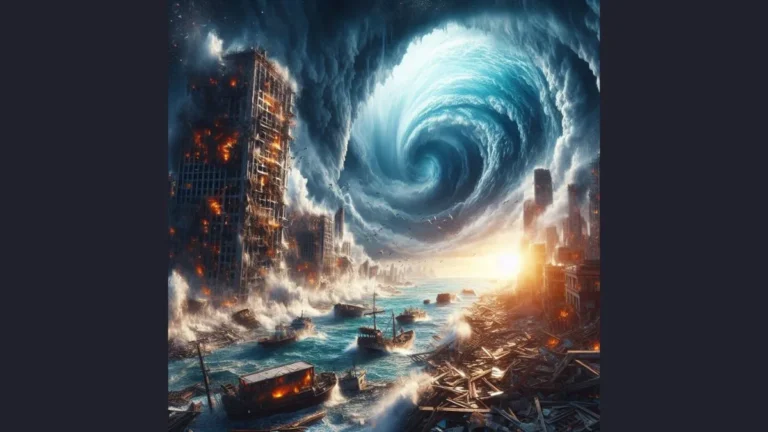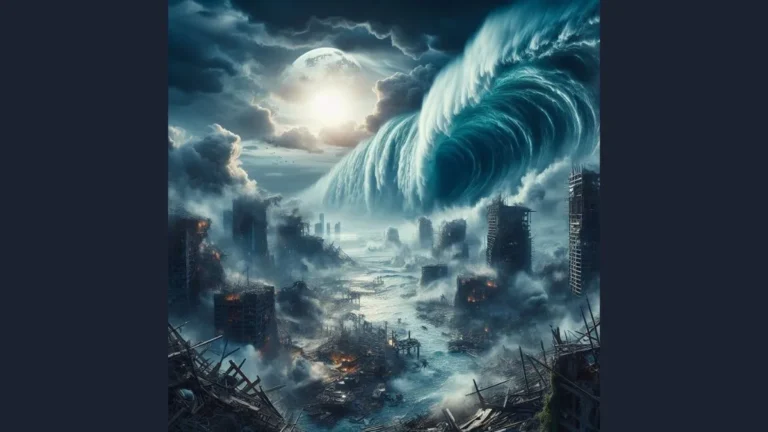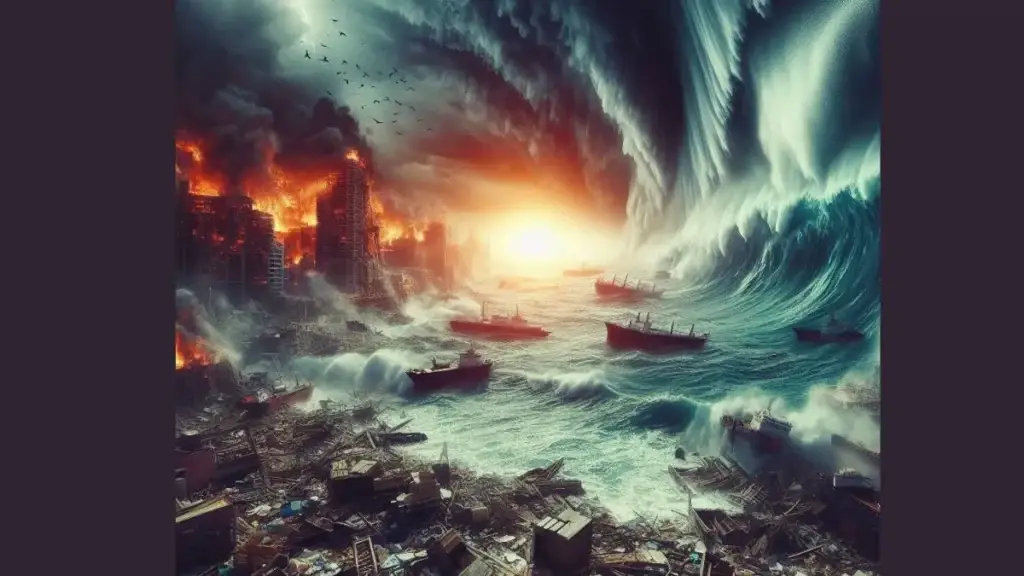Tsunami
If you’re like most people, earthquakes are probably the first thing that spring to mind when you think about tsunamis. Although seismic activity is a primary cause of these enormous waves, other, less anticipated occurrences have the potential to unleash a deadly apocalypse as well.
Underwater Earthquakes: A Common Concern
Without a doubt, the majority of tsunamis are caused primarily by undersea earthquakes. Massive amounts of water can be moved as tectonic plates move beneath the surface of the ocean, starting a chain reaction that eventually forms the rogue waves. These seismic occurrences have incredible force that may cause devastation to coastal towns thousands of miles away from the epicentre.
Underwater Landslides: Quiet Yet Lethal
Submarine landslides are less frequent than the Earthquakes, yet they may still cause disastrous tsunamis. These underwater avalanches, which can be caused by seismic activity, volcanic eruptions, or even just the slow degradation of underwater land, have the ability to quickly shift vast volumes of water, causing lethal waves to smash against unprepared shorelines.
Volcanic eruptions: The explosive power of nature
Volcanic eruptions may be disastrous for coastal areas hundreds of kilometres distant in addition to posing a hazard to local residents living close to active volcanoes. Underwater volcanic eruptions may produce tremendous shockwaves that travel across whole ocean basins, dislodging large amounts of water and producing tsunami waves due to the fast release of gas, steam, and magma.

Impacts of Meteorites: When Worlds Collide
A massive meteorite or asteroid striking the water can have disastrous effects, however it is extremely unusual. Even the strongest earthquakes cannot equal the intensity of an impact that may send shockwaves vibrating across the sea, displacing vast volumes of water and causing tsunami waves that are unimaginably large.
Nuclear Explosions Underwater: A Man-Made Threat
The danger of undersea nuclear explosions causing tsunamis is a scary reality in today’s world, not just a speculative one. Even while these occurrences are mercifully uncommon, they have devastating potential since they have the ability to trigger a rogue wave that might destroy whole coasts and result in countless losses in terms of life and property.
Glacial Calving: The Iceberg of Nature
Glaciers in the natural world have the ability to cause tsunamis, in addition to seismic and volcanic activity. Even while waves produced by earthquakes or volcanic eruptions are not as strong as those produced by big pieces of ice breaking off from glaciers and plunging into the ocean below can nevertheless seriously threaten coastal populations.
Being prepared and preventive is essential for survival.
Even while we might not be able to stop every incident that causes a tsunami, there are things we can do to lessen the damage to populations along the shore that are at risk. Understanding the dangers and taking proactive steps to reduce them is critical. This applies to anything from early warning systems that offer vital seconds or minutes of advance notice to comprehensive disaster preparedness plans that guarantee quick and efficient response activities.
In summary
Among the most destructive natural catastrophes ever recorded, tsunamis have the power to wreak unthinkable havoc on coastal towns worldwide. Even while earthquakes are probably the most common cause, it’s important to understand that a variety of unanticipated occurrences, such as volcanic eruptions, meteorite strikes, and undersea nuclear explosions, may also cause tsunamis. We may lessen the loss of life and property when these lethal waves hit by being aware of these less common triggers and taking proactive measures to be ready for them.

FAQs
Do earthquakes always result in tsunamis?
Although undersea earthquakes cause the majority of tsunamis, other occurrences including volcanic eruptions, underwater landslides, and meteorite strikes can also cause these strong waves.
Is it possible to foresee tsunamis in advance?
While the precise date and size of a tsunami are impossible to forecast, developments in oceanography and seismology have made it feasible to identify early warning indicators of likely events that might produce one, improving disaster response and preparedness.
To what extent may a tsunami go inland?
A tsunami’s ability to go inland is contingent upon a number of elements, such as the magnitude and intensity of the event that caused it, the configuration of the shoreline, and the land’s elevation. There have been instances where the waves have travelled many kilometres inland, wreaking havoc on large areas.
When a tsunami warning is issued, what should I do?
It’s critical to seek higher ground right away and heed local officials’ recommendations if your location is under a tsunami warning. Avoid coastal locations with low lying areas, and pay attention to emergency notifications for updates and guidance.
How can I assist communities devastated by the Rogue waves?
There are several methods to help communities devastated by the tsunami, including as making donations to respectable relief organisations, giving of your time and expertise, and spreading awareness of the value of resilience and readiness for disasters. Any amount of money, no matter how little, may help communities recover and rebuild after a tsunami destroys their homes.
Thank you reading another addition of sciencemaniac blogs.
Continue Reading
check Out my YouTube HERE



